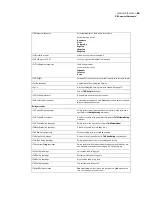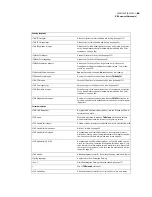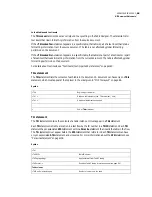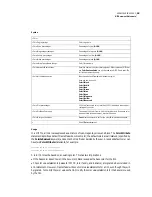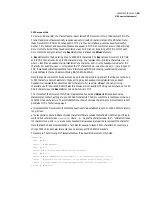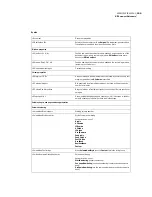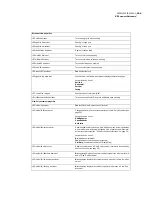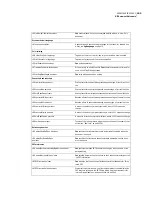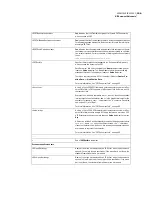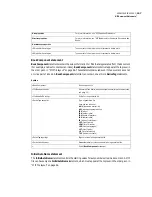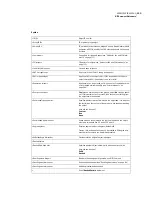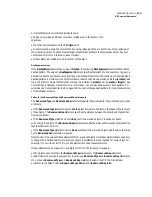
99
ADOBE FRAMEMAKER 6.0
MIF Document Statements
PDF Document Info
For version 6.0 and later, the FrameMaker product stores PDF Document Info in the document file. The
FrameMaker product automatically supplies values for Creator, Creation Date and Modification Data;
these Document Info fields do not appear in MIF. Via the user interface, a user can specify values for
Author, Title, Subject, and Keywords; these values appear in MIF. A document can also contain arbitrary
Document Info fields if they have been entered via an FDK client or by editing a MIF file. In MIF, each
Document Info entry consists of one
Key
statement and at least one
Value
statement.
A
Key
statement contains a string of up to 255 ASCII characters. The
Key
names a Document Info field,
and in PDF the name can be up to 126 characters long. You represent non-printable characters via
#HH
,
where
#
identifies a hexadecimal representation of a character, and
HH
is the hexadecimal value for the
character. For example, use
#23
to represent the “#” character. Zero-value hex-codes (
#00
) are illegal. In
PDF, these hexadecimal representations are interpreted as PDFDocEncoding (see Portable Document
Format Reference Manual, Addison-Wesley, ISBN 0-201-62628-4).
Note that a a Document Info field name can be up to 126 characters long, and a MIF string can contain up
to 255 characters. Some characters in the key string may be hexadecimal representations, and each
hexadecimal representation uses three ASCII characters. For example, a
Key
of 126 non-printing
characters would require 378 ASCII characters. However, since a valid MIF string can only have up to 255
ASCII characters, such a
Key
statement woud be invalid in MIF.
The contents of the Document Info field is represented by a series of
Value
statements. Each value
statement can contain a string of up to 255 ASCII characters. The Document Info contents can contain up
to 32765 Unicode characters. To accomodate this number of Unicode characters, the FrameMaker product
generates MIF in the following ways:
•
It represents the Document Info contents as a series of Value statements, each one 255 ASCII characters
long, or less.
•
It uses special codes to indicate Unicode characters that are outside the standard ASCII range. Mif repre-
sents Unicode characters as
&#xHHHH;
, where
&#x
opens the character code, the “
;
” character closes
the character code, and
HHHH
are as many hexadecimal values as are required to represent the character.
Note that each Unicode representation of a character uses up to seven ASCII characters. For example, a
string of 255 Unicode characters could require as many as 1785 ASCII charactrers.
For example, The following MIF statements show three possible Document Info fields:
<PDFDocInfo
<Key `Author'>
<Value `Thomas Aquinas'>
<Key `Title'>
<Value `That the Soul Never Thinks Without an Image'>
<Key `Subject'>
<Value `Modern translation of the views of T. A. concerning cognition; "It is'>
<Value ` impossible for our intellect, in its present state of being joined t'>
<Value `o a body capable of receiving impressions, actually to understand...'>
> # end of PDFDocInfo
Summary of Contents for FRAMEMAKER 6.0
Page 1: ...MIF Reference Online Manual FrameMaker 6 0 Adobe ...
Page 15: ...15 ADOBE FRAMEMAKER 6 0 Introduction ...
Page 159: ...159 ADOBE FRAMEMAKER 6 0 MIF Book File Statements ...
Page 232: ...232 ADOBE FRAMEMAKER 6 0 MIF Asian Text Processing Statements ...
Page 252: ...252 ADOBE FRAMEMAKER 6 0 Examples ...

